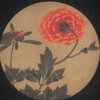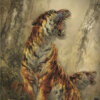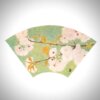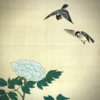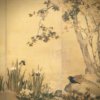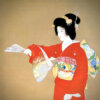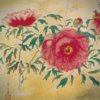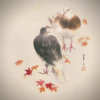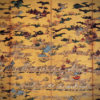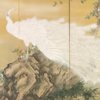Summary | Art History of Japan | Painting | No.1 Asuka – Muromachi Period
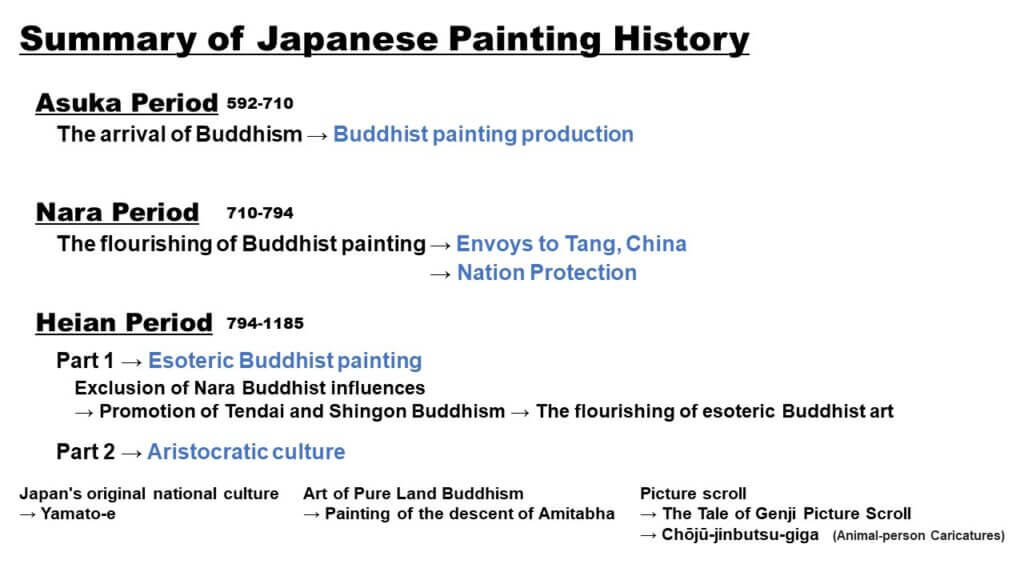
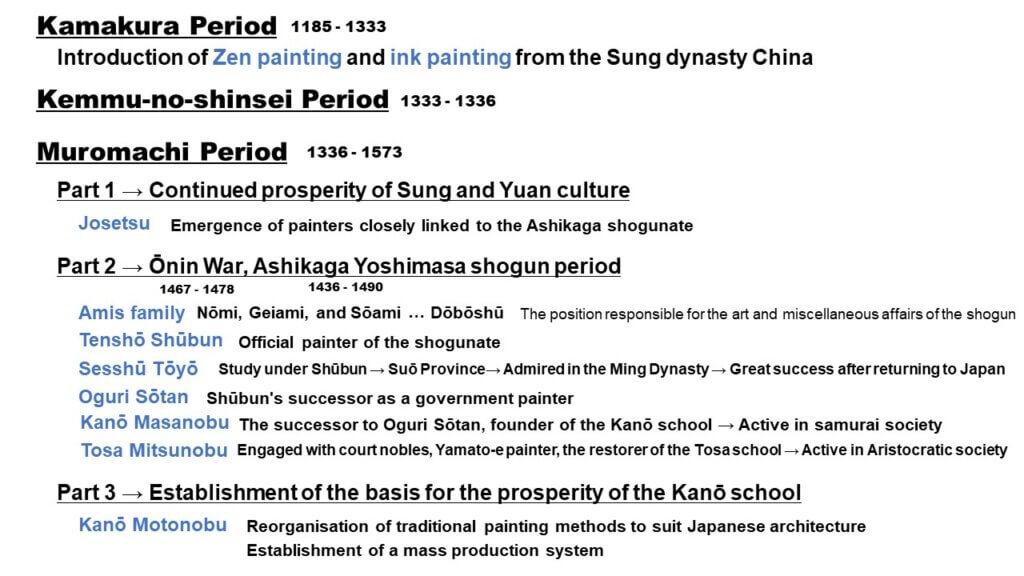
PDF File: Summary of Japanese Painting History Resume Vol. 001-002
Introduction
This time, I would like to introduce a summary of Japanese painting history.
Well, what do you think of when you hear the word “Japanese painting”?
Kanō-ha school?
Ok, ok. That’s right.
The Kanō-ha school is the largest group of painters in the history of Japanese art. That’s a pretty good answer.
What else?
Yes, he is one of the great masters of modern Japanese painting, along with Takeuchi Seihō.
His paintings of Mt. Fuji are very popular. This is also a good answer.
What else?
That’s right.
He’s one of the most eccentric painters of the Edo period, and his paintings of chickens are synonymous with him.
Nowadays he’s very popular, not only in Japan but also in the world, and his recent exhibition was very popular with a lot of visitors.
Is there anything else?
Oh, Ukiyo-e!
That’s right… Ukiyo-e, indeed…
Katsushika Hokusai is very famous. His work called “The Great Wave of Kanagawa” is wonderful, isn’t it?
That work is said to be the most famous Japanese painting in the world.
Well…, even if we say “Japanese painting”, there are many kinds of works.
So, the question is: do you know when these works were created?
Or do you know the background of the period in which they were painted?
I think many of you may be unaware of these. There are people who know a lot about the artists and their works from a micro perspective, but don’t really understand the whole flow from a macro perspective.
But I think this situation is unavoidable.
The history of Japanese painting is related to the history of Japan and the history of Buddhism and Shintoism, and it is difficult to understand unless you study them in total.
This is why I think it has been so difficult for people to study the history of Japanese painting.
In this lecture, I will introduce the history of Japanese painting in a compact way, and I will leave out many things, but I hope you will get a rough idea of the flow of the history.
Later on, you will be able to study in detail the parts of each period that interest you.
This lecture can be used as a review of the history of Japanese painting, or as an introduction to it.
So let’s get started.
Asuka Period
The history of Japanese painting began in the Asuka period. The Asuka period is from 592 to 710, and what happened in Japan during this period is that Buddhism was introduced to Japan.
In Japan, there was originally a native religion called Shinto, but at this time, Buddhism was introduced from abroad and Buddhism started in Japan.
When we were students, we learned that Buddhism was introduced from Baekje in 538, but now there are many theories, so please understand that Buddhism was introduced from India to Japan through China and Baekje around that time.
In order to spread the teachings of Buddhism, the production of Buddhist paintings began in Japan. In this period, Buddhist paintings were used for barrier paintings and designs for craftworks.
The technique of making hanging scrolls is also thought to have been introduced from China through Baekje, along with the arrival of Buddhism. So the arrival of Buddhism brought many changes to Japan.
Now let’s move on. “What? It’s the end of the Asuka period?” You might be surprised, but we’re going to go on and on (laughs). If we don’t move forward at this pace, we’ll never get to the present day.
Nara Period
Now let’s move on to the Nara period.
The Nara period is the period from 710 to 794.
Do you know Nara?
Yes, Nara is the name of the city. The capital of Japan used to be in Nara.
From there, the capital moved to Kyoto, and then finally to Tōkyō as we know it today.
Nara is a very popular tourist destination because of its atmosphere as an ancient capital, so if you have a chance, please go there.
In this period, the production of Buddhist paintings was also flourishing.
It was a continuation of the Asuka period. In the background of this period, there was the Japanese envoy to China.
At that time, China was more civilised than Japan, so from Japan’s point of view, it was a country to be admired.
So the Japanese government sent more and more students to China to learn about the advanced culture, and the students brought back the advanced Buddhism and Buddhist paintings, so the production of Buddhist paintings became more and more prosperous.
In addition to this, there was the idea of the “nation of protection” during this period, and this idea was also one of the reasons why the production of Buddhist paintings flourished.
What is this idea of “nation protection”?
It is the idea of using the power of Buddhism to resolve the confusion in the country.
In this era, there were many epidemics and social unrest. It was a time when things like the modern coronavirus were spreading.
When the emperor was worried about how to govern the country, he decided to use the power of Buddhism to govern the country.
In the process, he started to build large Buddhist statues and a lot of temples, thereby making Buddhist paintings more and more popular.
This is the flow of the times.
Heian Period
Uh-huh, ok… from this Nara period, we now move on to the Heian period. The Heian period lasted from 794 to 1185.
This period is divided into the early part and the latter part.
In the early part of this period, esoteric Buddhist paintings began to appear.
“What is esoteric painting?”
If you are wondering, don’t worry. I’ll explain it to you now.
The Buddhism that flourished during the Nara period (710-794) was called Nara Buddhism, partly because the capital was located in Nara. As the Nara period progressed, Nara Buddhism became too powerful and began to interfere in the world of politics.
There are those annoying people who interfere in everything – it’s like that.
There was even one monk who said, “I’m going to be the emperor!”
I think he was getting carried away!
As a result, there was a movement to eliminate the influence of Nara Buddhism from politics, which led to the Heian period (794-1185). That’s why the capital was moved from Nara to Kyoto.
Then, in the process of trying to find a new Buddhism that was not Nara Buddhism, which the government had already had enough of, Tendai and Shingon Buddhism emerged. Saichō and Kūkai appear on the stage of history.
It was during this period that Kūkai went to the Tang Dynasty in China on a mission to learn about esoteric Buddhism and came back.
Esoteric Buddhism is a very core part of Buddhist teachings, and based on this, Kūkai founded the Shingon sect.
The Shingon sect of Buddhism is characterized by rituals that emphasize a solemn atmosphere. For example, the ritual of burning goma (homa) in a darkened room. Buddhist paintings were used to create such a solemn atmosphere. Well, it seems that decorating the room with Buddhist paintings would create the atmosphere, doesn’t it?
You may feel as if the Buddha were jumping out of the painting and talking to you.
Among such Buddhist paintings, mandalas are said to be the most important.
The mandala is a set of two Buddhist paintings, the Mandala of the Womb Realm and the Mandala of the Vajrayana Realm, and these two represent the truth of the world.
The Kūkai also brought back mandalas from the Tang Dynasty, and based on them, they began to be produced in Japan.
It was probably around this time that hanging scrolls also began to be produced in Japan in earnest.
Thus, in the early part of the Heian period (794-1185), among Buddhist paintings, a slightly different type of Buddhist paintings, esoteric Buddhism paintings represented by mandalas, appeared and were highly valued, and esoteric art flourished.
The latter half of the Heian period saw a shift to the aristocratic culture.
Around this time, the Japanese government felt that the Chinese culture, which had seemed so advanced until then, had fallen into a rut and abolished the envoys to China.
Instead, a culture matured within Japan, and various things were developed.
It is said that hiragana was also created during this period.
The Yamato-e style of painting was born out of this process of creating something unique to Japan.
The term “Yamato-e” is used to describe Japanese paintings, which are unique to Japan, as opposed to the paintings that came from China, which are called ” Kara-e”.
Yamato-e is characterized by its depiction of aristocratic customs and events.
Also, in the latter half of the Heian period, the belief in the Pure Land was born.
In this period, the idea of the Latter Day of the Law was born. The idea is that Buddha’s teachings would no longer be effective after thousands of years of his death, and the world would come to an end. As a result, social unrest emerged.
Moreover, warriors appeared and even monks at temples became armed forces in this era, so the period became very rough. It was like a picture of hell…
So in Kyoto, the capital of Japan, there were piles of dead bodies lying around, and the people had to eat them to survive.
Whoa! That’s just a hell of a picture~!
Therefore, the atmosphere of the end of the world became widespread among the aristocracy, and the aristocracy wanted to save themselves, so they looked to Buddhism for an answer, and came up with the idea that if they died, Amitabha would come to their rescue and they would be reborn in the Pure Land, where they would be enlightened and everyone would be happy. This is the Pure Land belief.
So, in the hope that Amitabha would come to our aid, the image of Amitabha coming to save us was frequently painted. This is called the Amida Raigō-zu, an image of the descent of Amitabha. This is a characteristic of this late Heian period painting history.
Then there were the picture scrolls…yes, picture scrolls were often painted in this era.
The most famous one is called the Tale of Genji Emaki. At that time, there was a long love story of aristocrats called The Tale of Genji written by Murasaki Shikibu, and the Tale of Genji Emaki is a picture scroll of the story that can be opened horizontally in chronological order.
One of the most innovative aspects of this work is that it depicts a scene of aristocrats doing something from an oblique angle upwards by removing the roof of the aristocrat’s house, which is a common technique in Yamato-e paintings of this period.
Don’t you think that composition is very innovative?
The idea of taking off the roof and looking at what the nobles are doing from an angle… I want to say, “What an outstanding idea!”
This is a very interesting picture scroll with a very innovative way of drawing.
There is also a famous picture scroll called Chōjū-jinbutsu-giga (鳥獣人物戯画, literally “Animal-person Caricatures”).
Famous scenes depict animals wrestling and chasing each other like humans. It’s often referred to as the beginning of a comic book.
Such a variety of picture scrolls became a feature of the latter half of the Heian period.
Kamakura Period
So far we have seen the culture of the aristocracy, but now we come to the Kamakura period and the age of the samurai.
Let’s take a look at how painting changed in the age of the samurai, the Kamakura period.
Do you know Kamakura?
If you do, you might be quite a Japan expert. Oops, that’s impolite to the people of Kamakura, sorry.
Kamakura is the name of the city and is near Tōkyō. There is also a large Kamakura Buddha here.
Japanese people really love the Great Buddha. Of course, I love it too.
The Kamakura Shogunate was established here in Kamakura.
The Kamakura period lasted from 1185 to 1333.
What happened during the Kamakura period was the introduction of ink painting and Zen painting from the Sung dynasty China.
During the Tang dynasty (618-907), China’s ink production techniques were greatly developed. This led to the creation of many of the paintings that we now consider to be ink paintings, such as landscapes and flower-and-bird paintings. These paintings were introduced to Japan from China.
Next, I would like to talk about Zen painting. Zen is a school of Buddhism that focuses on meditation through zazen sitting, and it became very popular in China around the Sung dynasty, and it was introduced to Japan in this period.
Zen Buddhism in China has since declined, but in Japan Zen Buddhism has become associated with many different cultures and is still popular today. Even without the idea of religion, it has a great influence on the Japanese sense of beauty.
Japanese Zen Buddhism is famous all over the world.
It is well known that Steve Jobs, the founder of Apple, was also devoted to Zen.
Do you think I could be like Steve Jobs if I devoted myself to Zen?
Of course not. I know that.
Back to the story.
At the same time, Zen painting was also introduced to Japan. Zen painting is a kind of painting that was done to spread the teachings of Zen. In the Kamakura period, many Zen paintings were made, such as portraits of masters and paintings of Bodhidharma.
Of course, the aristocratic culture of Yamato-e, Amida-raigō-zu, and picture scrolls was also upgraded in parallel, but the samurai, who had taken power from the aristocracy, were more receptive to new things, so Zen painting and ink painting were accepted.
In addition, it seems to us that ink painting is very powerful because of its bold composition and strong brushwork. This powerful image must have been very popular with the samurai… so this kind of painting became very popular.
Muromachi Period
Next came the Kenmu-no-shinsei period (1333-1336), a period of three years of political turmoil, followed by the Muromachi period (1336-1573).
There are probably very few Japanese people who know what Muromachi is.
This is also the name of a place in Kyoto, Muromachi-dōri street, where the third shogun of the Muromachi Shogunate, Ashikaga Yoshimitsu, built a very luxurious mansion, hence the name Muromachi Period.
No way, it’s the name of a street. Anything is possible, isn’t it?
The Muromachi period lasted from 1336 to 1573, which was more than two hundred years. It was as long as the Edo period, so a lot of things happened.
This period was really long.
A lot of things happened in this period, and it is said that the foundation of many things imagined today as “Japanese-style” was established in this period.
I’ve written a lot on the whiteboard, but don’t be scared, hahaha…
It was during this period that many things came into being, such as the traditional Japanese-style room, the tokonoma Japanese-style alcove, the tea ceremony, and so on. Let’s take a look at that period from now on.
The period is divided into three parts: the first part, the second part, and the third part.
The first part of the period was basically a continuation of the Kamakura period. The culture of the Kamakura period was influenced by the culture of the Song and Yuan dynasties in China. Ink painting, Zen painting, and so on.
However, a slightly unique feature has emerged. This was the emergence of painters with close ties to the Ashikaga shogunate, which was in power at the time. So there were more and more painters who were connected to powerful people.
One of the most famous painters was Josetsu.
Josetsu was active from the middle of the 14th century to the beginning of the 15th century, when Ashikaga Yoshimitsu and Ashikaga Yoshimochi were active.
In the second of the Muromachi period, the Ōnin War broke out.
The Ōnin War began with the issue of the succession of the Ashikaga shogunate, which led to a huge conflict in Kyoto. In addition, the struggle for authority among the major feudal lords over the succession led to a major war, which lasted for more than ten years.
More than ten years is a long time to fight. It was during this period that many of the cultural treasures produced before this period were destroyed by fire…
Oh! My God! … I am tired of the shallowness of human nature.
OK. Let’s change our minds and look at what happened in this period.
A characteristic feature of this period was the appearance of the Ami family.
There were many members of the Amis family: Zeami, Nōami, Geiami, Sōami, and so on.
The Ami clan was the family that handled the artistic matters of the Ashikaga shogunate.
The position responsible for the art and miscellaneous affairs of the shogun was called “Dōbōshū”, and was mainly held by the Ami family.
There were many members of this family in this period, so the names are a bit confusing.
The three most famous members in the art world were Nōmi, Geiami, and Sōami, three generations of parents and children.
These three men were the leaders of the art world at the time.
Next came a man called Tenshō Shūbun.
This man was also an official painter of the Ashikaga shogunate, so you can think of him as the next official painter of the shogunate after Josetsu.
And next is Sesshū Tōyō. Finally, Sesshū is here.
Sesshū is relatively well known to most people who study the history of Japanese painting, and here he appears.
Sesshū had studied painting under Tenshō Shūbun, but he did not succeed in his career.
Then, a rival named Oguri Sōtan was chosen as Shūbun’s successor as a government painter.
At that time, Sesshū was asked by the lord of Suō Province, now Yamaguchi Prefecture: “Would you like to come and work in my country?”, and he went to Suō Province.
So, this was a turning point for Sesshū.
The lord of Suō Province was trading with the Ming Dynasty of China at that time. When the lord sent a ship to Ming Dynasty, he asked Sesshū: “Hey, Sesshū, you’ve always wanted to go to China, why don’t you take this ship and go there? Why don’t you go to the home of ink painting and study there?”
Then Sesshū replied: `Aaahhhh! Oh my God! I want to go! I’ve always wanted to go to China!’.
Then he took the ship to Ming Dynasty.
At that time, Sesshū’s paintings had a very sharp sense of expression, so they were not well received in Japan, but when he went to Ming Dynasty, his sharp sense of expression was much more accepted in Ming Dynasty.
Ming people said: ‘There is a great painter from Japan! There is no painter like him even in China!’
Ming people praised Sesshū’s painting.
After receiving such a great reputation in China, Sesshū felt “Oh… my ink painting was not wrong. I’m glad I came to China”, and he returned to Japan with more confidence.
After returning to Japan, he confidently painted pictures that had been approved in the home of ink painting, and became a great success in Japan.
Sesshū had a long-lasting influence on later painters, and he became a milestone in ink painting, as later painters would always refer back to Sesshū if they had any questions.
And the next one is Kanō Masanobu, so finally, we see the Kanō school!
This man was the successor to Oguri Sōtan as a government painter, and the Kanō school, the largest group of painters in Japan, first emerged in the middle of the Muromachi period.
Whereas the Kanō school flourished mainly among samurai, the Kanō school’s rival, the Tosa school mainly flourished among court nobles. The Tosa school painted Yamato-e for the court’s official painting office. It was Tosa Mitsunobu who triggered the great development of the Tosa school.
These two men, Kanō Masanobu and Tosa Mitsunobu, were rivals. Please keep in mind the Kanō school of samurai and the Tosa school of court nobles.
These two schools would continue to exist until the end of the Edo period.
The third part of the Muromachi period is now upon us. During this time, the Kanō school laid the foundations for its prosperity.
This was done by Kanō Motonobu, the son of Kanō Masanobu.
What Kanō Motonobu did was to organize the painting methods of the many paintings that had come from China.
The paintings that came from China did not fit the Japanese architectural style.
Japanese architecture is unique, with fusuma sliding doors and tokonoma alcove in Japanese-style rooms, so there were problems with the size and expression of Chinese paintings.
Kanō Motonobu updated the way of painting in order to apply it well to such things. He adopted the good points of the Tosa school and created his own style of painting.
Around this time, the Kanō school also began to receive orders for large paintings, such as wall paintings and folding screens, from various authorities other than the shogunate.
At first, I thought he was happy because he was getting so many orders, but things were not so simple.
No matter how many orders we get, if we can’t handle them, we’ll get complaints.
If it had been this time, we might have been killed.
How did Kanō Motonobu manage to overcome this large volume of orders?
Kanō Motonobu created a manual of painting techniques so that many pupils could learn to paint in the same way in order to fulfill the many orders.
The mass production system was achieved by teaching different apprentices to paint to a certain level of quality.
This is why the Kanō school has a method of undertaking large projects with the whole school.
No matter how many orders the Kanō School received, it had the capacity to cope with them.
This is the key to the prosperity of the Kanō school.
So, even if a work is said to have been painted by Kanō Motonobu, it is said that some of it was actually painted by different pupils and the rest by Kanō Motonobu. It is quite difficult to authenticate.
Oh, I see… It’s interesting, isn’t it?
Anyway, so much happened in the Muromachi period.
After this period, it was the era of the warring states.

